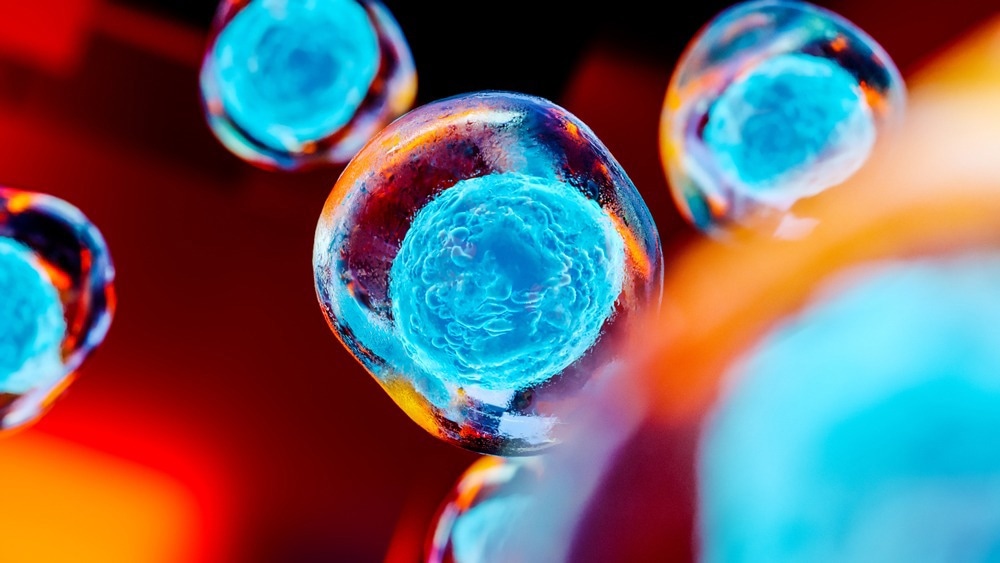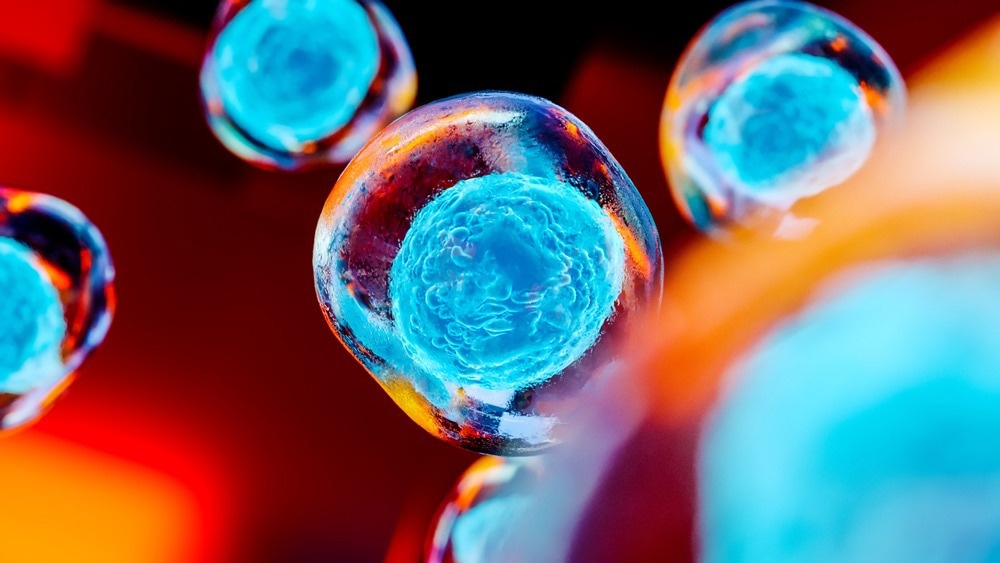A team of researchers recently published a paper in the journal Optics and Lasers in Engineering that demonstrated the feasibility of using digital holography-based three-dimensional (3D) tomographic flow cytometry for high-throughput cell analysis.

Study: On the hydrodynamic mutual interactions among cells for high-throughput microfluidic holographic cyto-tomography. Image Credit: pinkeyes/Shutterstock.com
Limitations of Imaging Flow Cytometry
Imaging flow cytometry is often used as a robust measurement technique in healthcare, life sciences, and clinical diagnostics. It combines high-resolution spectroscopic and optical information with conventional flow cytometry technology.
Fluorescence and brightfield imaging modules typically record cells flowing in a microfluidic channel to obtain their chemical and morphological insights through fluorescence and optical signal colocalization.
Although the realizable throughput of the imaging flow cytometry systems is up to tens of thousands of cells per second, these systems are based on fluorescent analysis and provide only a single two-dimensional (2D) projection of a 3D object.
Digital Holography as an Alternative to Imaging Flow Cytometry
Quantitative phase imaging (QPI) was recently proposed as a low-cost alternative to imaging flow cytometry systems to detect cells rapidly. Digital holography, a non-destructive and non-contact 3D microscopy technique, is considered an effective tool for cell imaging by QPI in biomedical applications.
During the conventional digital holography cell imaging, cells are kept in Petri dishes to complete necessary recordings through their non-stained real-time observation, specifically for studying the cell division process, cell drug response, and cell morphogenesis.
In-focus imaging of each cell can be retrieved easily due to the ability of digital holography to obtain numerical focus after the recording process.
However, a limited number of cells can be observed using this type of microscopic technique, which is a significant drawback. Microfluidic channels can be combined with digital holography-based cell imaging to overcome the drawback.
Digital Holography-Based 3D Tomographic Flow Cytometry to Achieve High-Throughput Cell Analysis
Opto-fluidic holographic microscopy has gained considerable attention in the last decade to meet the requirements of holographic flow-cytometry, a high-precision, high-throughput cell flow imaging technique.
In flow cytometry conditions, using digital holography as the imaging module can eliminate the number of cell observations limitations due to its label-free QPI and multi-refocusing capabilities.
The combination between flow cytometry and QPI has been used effectively for crucial biomedical applications, such as cancer cell identification and human leukemic cell classification. Cell rolling-based flow cytometry development to achieve 3D phase contrast tomography has recently opened a new possibility for tomography.
In this approach, the cell’s rolling behavior replaces the mechanical scanning during digital holography recording to achieve 3D phase-contrast tomography in a conventional holographic microscopy system without using any particular setup. This strategy can effectively reconstruct the 3D refractive index map/3D phase contrast tomogram of every flowing cell, such as circulating tumor cells and blood cells.
The complete rotation of any cell in the field of view (FOV) must be ensured to achieve the 3D phase-contrast tomography of the flowing cells in a microfluidic channel. In contrast to the conventional tomographic imaging systems, the in-flow phase-contrast tomography must assess the cells along their flowing paths, which makes a detailed understanding of the cell microfluidic dynamics essential.
Although several cells can be analyzed in the same FOV to increase the system throughput, no investigations have been made until now to evaluate the effects of hydrodynamic interactions on the rotation of very adjacent cells in a tomographic flow cytometer to determine the maximum achievable throughput.
Investigating the Effectiveness of Digital Holography-based 3D Tomographic Flow Cytometry
In this study, researchers studied the hydrodynamic interactions between the adjacent rotating cells within a microfluidic channel to investigate the impact on motion dynamics when the cells were close to each other by performing a numerical and experimental simulation of the fluid dynamics.
Researchers performed experiments using highly concentrated samples to image tens of cells in the FOV simultaneously. A digital holography tool was used to recover and analyze the cell dynamics, including rotation, speed, and 3D tracking of cell position, in a microfluidic experimental scenario observed in tomography.
The ability of digital holography to numerically retrieve the 3D cell positions made the technique specifically suitable for combining with flow cytometry modality. Digital holography was used to collect the experimental data needed to investigate the local changes in the flow properties due to the hydrodynamic interactions among the adjacent cells.
The worst-case within the recorded holographic sequence where a group of five cells flowing very adjacent was modeled to quantify the hydrodynamic interactions between the cells by integrating the numerical simulations with experimental observations.
Research Findings
In the imaged FOV, all cells performed more than one complete rotation, during which they were displaced less than 200 micrometers in the flow direction. This observation from the simulation was consistent with the experimental observation, which showed that necessary full cell rotation could be obtained within the y-axis FOV of 235 micrometers.
Although hydrodynamic interactions led to a quantitative effect on the cell rotational behavior, the cells could still complete necessary rotation without being considerably affected by the adjacent cells within the FOV.
Cell deformation due to hydrodynamic interactions was completely negligible, which allowed reliable reconstruction of the 3D refractive index tomograms of the five analyzed cells. An upper bound of the throughput of the holographic flow-cyto-tomograph was determined by extending this local analysis to the entire FOV.
The holographic cyto-tomographic measurement throughput was considerably increased compared to the conventional tomographic flow-cytometry as more cells could be analyzed simultaneously since interactions among adjacent cells were non-significant.
The xy-section of the microfluidic channel imaged by the digital holography microscope measured 200 micrometers × 235 micrometers. The system throughput can be increased up to 50 cells per frame by cropping a central region of analysis of 160 micrometers × 215 micrometers from the microfluidic channel xy-section and considering the worst-case five cells occupied a 60 micrometers × 60 micrometers region. A maximum of 30 tomograms can be recorded inside the 160 micrometers × 215 micrometers active area as each cell took an average of 40-45 seconds to cross the FOV.
Throughput can also be improved further by increasing the flow rate since no mechanical deformation was observed due to hydrodynamic interactions. A single full rotation was sufficient for the reconstruction of the tomogram.
In the experimental results, the cell experienced 1.5 rotations on average and could take 25-30 seconds to undergo a full rotation within the observed FOV. Therefore, the upper bound of the potential throughput can be increased to 50-60 tomograms per second by setting the correct flow rate.
The angular sampling could be reduced by implementing more performing tomographic algorithms or increasing the camera frame rate to improve the tomographic accuracy.
To summarize, the findings of this study demonstrated that digital holography-based 3D tomographic flow cytometry could provide high-throughput cell analysis. However, more research is required for the system’s future development to adopt it in biomedical applications.
Reference
Pirone D, Memmolo P, Xin L. et al. (2022) On the hydrodynamic mutual interactions among cells for high-throughput microfluidic holographic cyto-tomography. Optics and Lasers in Engineering. https://www.sciencedirect.com/science/article/pii/S0143816622002433
